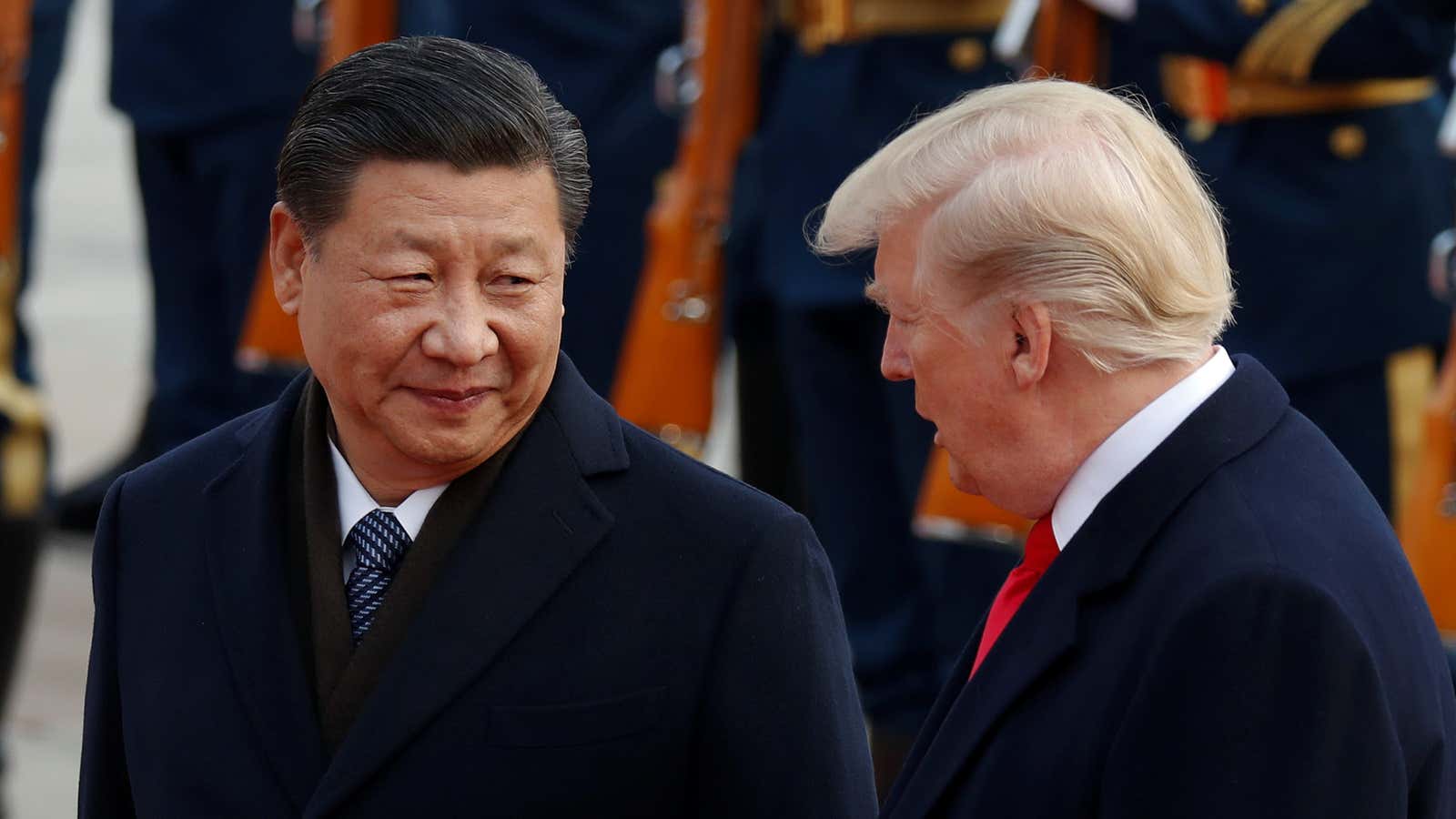On his return to the White House from his lengthy Asian tour, Donald Trump on Wednesday (Nov. 15) proclaimed the trip a big success. One of the most eye-catching statements he made was that China had agreed to give up an unwelcome pillar of its approach to North Korea.
Only it hasn’t.
Trump said that the US and China agree that they should not accept a “freeze for freeze” proposal on North Korea. The term refers to the idea that in exchange for North Korea freezing its missile and nuclear programs, the US and South Korea would suspend their long-standing joint military drills in the region. Then the parties would come together to talk. These were Trump’s words on the development:
President Xi recognizes that a nuclear North Korea is a grave threat to China, and we agreed that we would not accept a so-called “freeze for freeze” agreement like those that have consistently failed in the past. We made that time is running out and we made it clear, and all options remain on the table.
It would indeed be a major breakthrough considering that Beijing has long insisted that enacting a “freeze for freeze” is the best approach to solve the North Korean nuclear crisis since it introduced the concept in March. The proposal serves China’s bottom-line position that it won’t allow any armed conflict at its doorstep. The US has repeatedly rejected China’s proposal, noting it’s not fair to equate North Korea’s illegal weapons programs with its long-standing defensive activities with ally South Korea.
Trump’s representation of China’s stance didn’t manage to survive for long. In a regular briefing Thursday (Nov. 16), Geng Shuang, a spokesman with the Chinese foreign ministry reaffirmed Beijing’s support for the “freeze for freeze” proposal, describing it as “the most feasible and reasonable solution under the current circumstances.”
China will send a special envoy to Pyongyang on Friday. North Korea’s missile launches and nuclear program are expected to be included in the agenda. Analysts are wondering whether the meeting is geared towards delivering the US and China’s unified stance or reassuring Pyongyang and improving China-North Korea relations.
